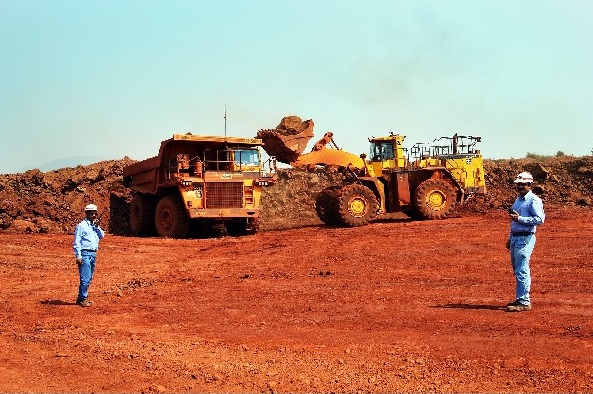|
Getting your Trinity Audio player ready...
|
Ghana has completed its first-ever Mineral Resource Estimate (MRE) on bauxite, an ore used to make aluminium, revealing that deposits in the Nyinahin Block-B hills in the Ashanti Region are 50% higher than historically estimated.
While previous studies suggest 250mn metric tonnes of bauxite deposits in the three hills (4, 5 and 6), a recent MRE indicates that the locations hold a minimum of 375mn metric tonnes.
Ghana Integrated Aluminium Development Corporation (GIADEC), a state agency set up to develop and promote the aluminium industry, in collaboration with Rocksure International, a strategic, wholly domestic partner, revealed the estimate on November 14.
The West African country is hoping to be the first nation on the continent to achieve full vertical integration in the aluminium industry. Following up from what has been left of a 1960s attempt to develop the sector, GIADEC is seeking to attract $6bn worth of investments to create a value chain dominating Africa, writes the Daily Graphic.
In September 2021, GAIDEC announced Rocksure as its partner for Project 2, one of four projects that defined Ghana’s Integrated Aluminium Industry (IAI) now being executed. Rocksure then commenced an MRE into Block-B to validate the bauxite resources, according to the report.
GAIDEC is also expected to announce a partnership with a European firm in the coming weeks to execute Project 3A of the IAI Projects, which entails the development of a mine in Nyinahin Block C and the construction of a refinery.
Bauxite resources in Ghana are estimated at around 900mn metric tonnes and mainly concentrated in three areas: Awaso in the Western-North region with 60mn metric tonnes; Kyebi in the Eastern region with 160mn metric tonnes; and Nyinahin with 700mn metric tonnes.
GIADEC is targeting the aerospace, automobile, construction, pharmaceuticals and cable manufacturing industries, where demand for aluminium is growing, according to The Africa Report.
Analysts estimate the aluminium industry’s contribution to Ghana’s GDP to jump to 4% should it be fully developed from its current contribution of below 0.05%.
“It’s quite an ambitious plan if you look at it in terms of where the industry is in Africa today,” GIADEC chief executive Michael Ansah told the publication in early September, referring to Ghana’s project launched in 2021.
“This country is rich in minerals, but we’ve been exporting minerals in their raw state. We want to change that narrative and add value. We want to become an exporter of manufactured goods of value,” he said.
Cameroon, Egypt, South Africa and Guinea — the biggest bauxite producer — have made strides in their aluminium production processes in recent years, but are yet to achieve full vertical integration.
Source: Daily Mail GH





